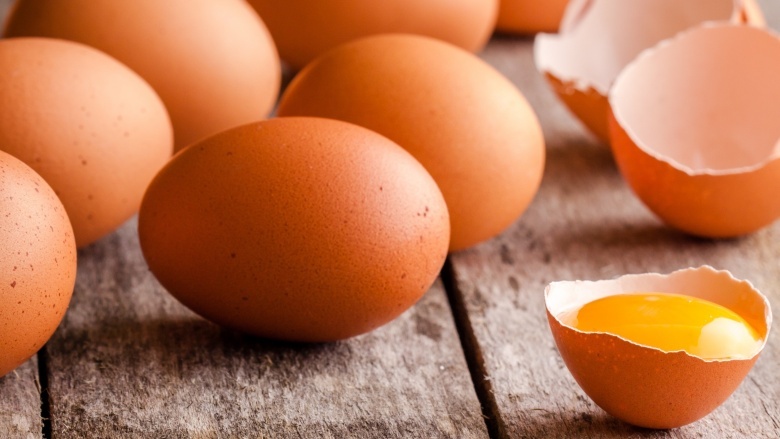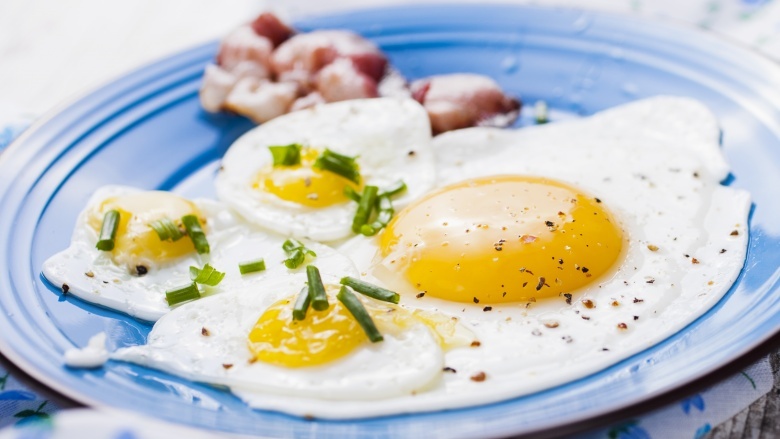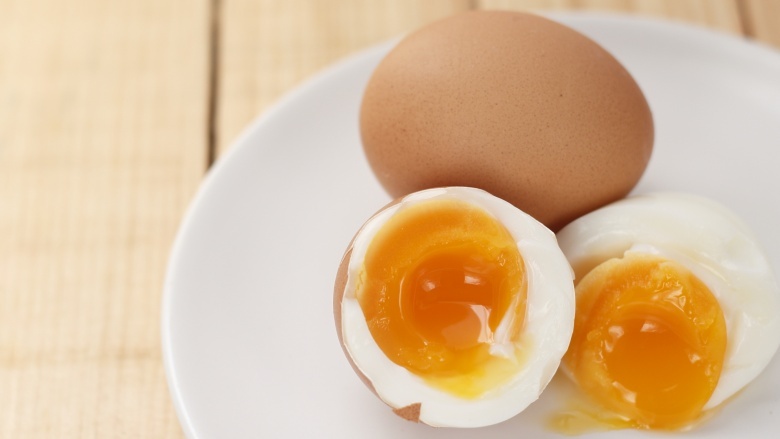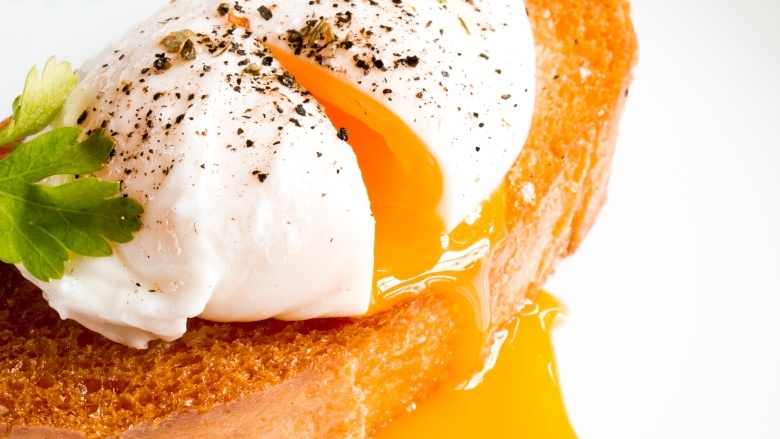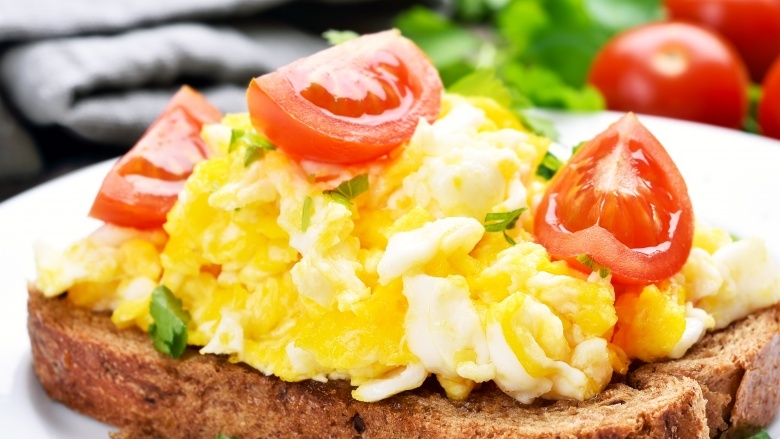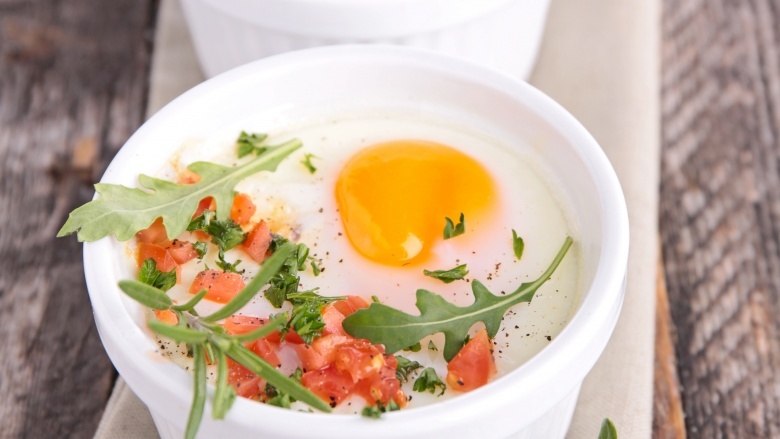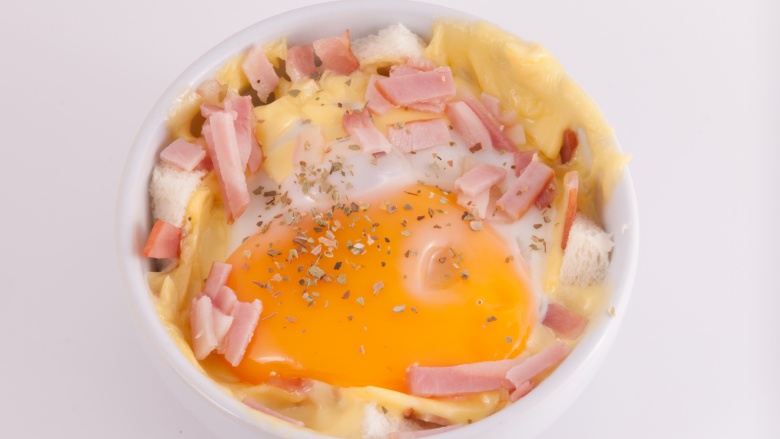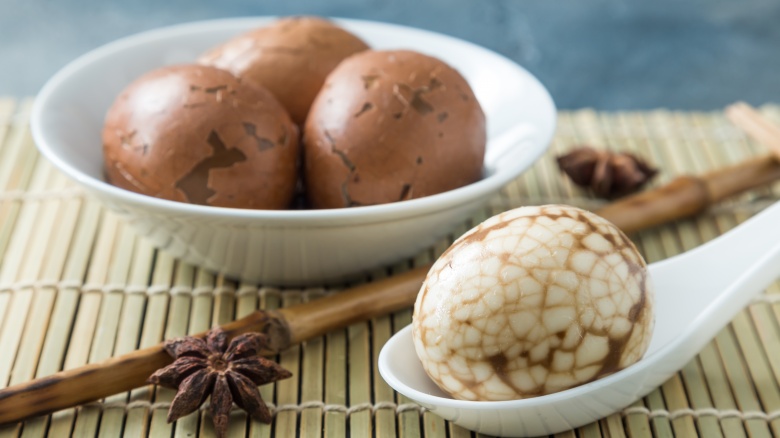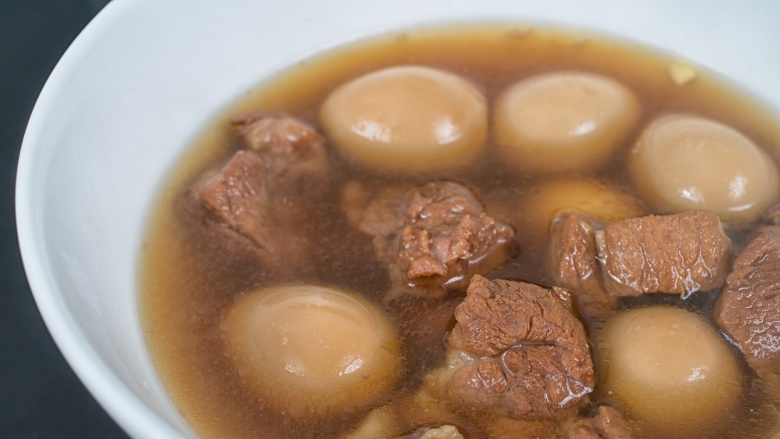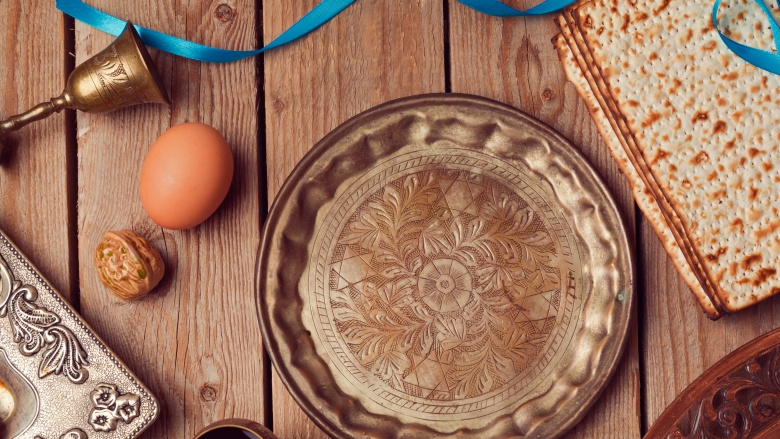How To Cook The Perfect Egg 9 Different Ways
A poorly cooked egg can ruin you for life. For those of us who have never had an under-cooked or rubbery egg, this may seem dramatic. We're here to tell you that it is not — after putting a fork full of runny egg white in your mouth, you can almost taste the salmonella. Now, you may be under the impression that you already know how to fry an egg, or hard-boil these little treasures perfectly. Most likely, however, you're incorrect, but luckily there are several steps to ensure you will get the same delicious, non-life-ruining result every time you cook. Here are a few basic cooking techniques and hacks that will show you how to cook the best egg possible, in five unique ways.
Fried
Let us start with the fried egg, a staple for breakfast in most households. But saying you want your egg "fried" still leaves much open for interpretation. This term includes sunny-side up, over-easy, and over-hard eggs. Cooking an egg sunny-side up means you want the egg white cooked completely while frying it only on one side, leaving the egg yolk soft and runny. Over-easy and over-hard are similarly cooked, except when cooking these versions, the egg has to be flipped. To cook over-easy or over-hard eggs, put a skillet over medium heat and melt two tablespoons of butter. Break the egg in a small bowl, and slip into the hot skillet. Immediately reduce the heat and cook until the whites begin to set. When the yolk begins to thicken, flip the egg. For over-easy eggs, remove from the heat once the whites are completely cooked through — for over-hard, make sure the egg yolk is completely set before removing from the pan.
Boiled
Hard-boiling eggs may seem foolproof, but many things can go wrong. Since the eggs are cooked in their natural shell, it's impossible to test for doneness. Overcooking the eggs can cause them to crack and leak the egg white into the boiled water, which makes you lose precious, delicious parts of the egg, and also makes cleanup unpleasant. To cook the perfect hard-boiled egg, first place the egg in a saucepan and submerge it in cold water. Then place the saucepan over medium heat and bring to a boil. Once you have a rolling boil, cover the pan. Boil for eight to ten minutes, then drain and cool before peeling.
Making a soft-boiled egg doesn't require much deviation from its hard-boiled cousin. First, bring a pot of water to a rolling boil, then reduce to a simmer. Carefully lower the eggs into the water and cook for five to seven minutes. For a runnier yolk, cook for only five minutes.
Poached
Some people reserve their favorite dishes, like eggs benedict, for when they go out to eat. Can you blame them? Poaching eggs can be quite daunting, but once you know learn how to poach, you'll see that it's quite simple.
Begin by bringing a medium-sized pot to a steady simmer. Add a small dash of vinegar, which helps the egg coagulate in the water and keep its shape. Crack an egg into a small dish, and set it aside. Now, create a gentle whirlpool in the simmering water by swirling the water with a spoon. The whirlpool motion will help the egg white wrap around the yolk, keeping the center golden. Now that you have a whirling hot-water bath, gently slip the egg into the water, white first. Turn off the heat and cover the pot. Allow the egg to cook for five minutes, uninterrupted. Then use a slotted spoon to remove the egg, and you're done!
Scrambled
Do you ever wonder why dive diners always seem to have fluffy, beautiful eggs, yet when you whip up the eggs at home, they always fall flat? The secret is quite simple: cream. Adding cream to your eggs makes them smoother and adds volume. Whisk together the eggs, cream, salt, and pepper. Melt two tablespoons of butter in a non-stick skillet over medium heat, then pour in the egg mixture. As the eggs begin to set, gently stir them, constantly turning until they resemble soft curds. You can add almost anything to this dish to make it a complete meal.
Cooking an omelette is really no different than scrambling eggs. Prepare the eggs just as you would to scramble them, and after pouring in the skillet, wait for the eggs to begin pulling away from the sides of the pan. Once that happens, begin gently pushing the eggs towards the center. When the surface of the eggs thickens, and no liquid is left, fold the omelette in half. Remove from the pan, and eat with extreme gusto.
Baked
Baking eggs has become incredibly popular as of late — one of the reasons for this is being able to cook a large amount of them all at once, thus making the serving of a large group way easier. This is also an extremely easy way to show off at the next brunch you host. Baked eggs can be served in standard ramekins, half an avocado, or baked in a tomato. The possibilities are almost endless, and the process to make these little marvels could not be easier. Start by preheating your oven to 325 degrees. Break an egg in a small dish, and then slip the egg into a greased ten-ounce ramekin, or whatever vessel you've chosen. Bake until the whites have completely set, leaving the egg yolk soft. This should take about ten to twelve minutes. Once done, sprinkle with salt and pepper, and make sure you serve immediately, lest you at them all yourself.
Microwaved
If you've never cooked an egg in the microwave, welcome to the future. Not really, but truth be told, there is no good reason to nuke your eggs for breakfast if you are at all near a working stove or oven. We say this as civilized people with an interest in food. The microwave takes away the naturally rich flavors, and cooking eggs using normal methods frankly makes you feel like a human. That said, if you do find yourself needing to cook an egg in an ill-equipped office kitchen or college dorm room, the microwave is there for you.
To microwave an egg, first spray a ramekin or other heat-safe cup with cooking spray. Sprinkle a pinch of kosher salt in the bottom, then break the egg into your prepared vessel. Using the tines of a fork, pierce the yolk and the whites a few times to prevent a messy explosion during cooking. Using microwave-safe plastic wrap, cover the top, pulling back a small part to allow for venting. Microwave on high for about 50 seconds to start. Remove and set aside for about 30 seconds before removing the plastic wrap. If you discover the egg is undercooked, return it to the microwave and heat at 10-second intervals until you reach the desired level of doneness. That's it! We hope you only have to employ this technique sparingly.
Tea-marbled
Chinese tea-marbled eggs get their name from the cool marble pattern on the white exterior of the hard-boiled eggs after they soak in tea and spices. These delectable treats are an upgrade from your usual boiled egg and are traditionally enjoyed in China at tea time and during the period of Chinese New Year. In addition to being thought of as lucky, tea-marbled eggs are considered symbols of fertility. Growing up, I (Jennifer) often ate them when my grandparents and de facto babysitters served them with congee, a type of Chinese rice porridge.
Tea-marbled eggs are beautiful to behold, addictive, tasty, and a cinch to make. Simply place the eggs in a pot roomy enough to hold them and cover them with about 1 inch of cold water. Bring the water to a boil over high heat, then immediately remove the pot from the heat and cover. Let it stand for about 10 minutes, then remove the eggs with a slotted spoon. While the eggs cook, bring about a quart of water to boil in a separate pot over high heat, them immediately remove the pot from the heat. Add a tea bag (jasmine works very well), soy sauce, sugar, and warm spices such as anise, cinnamon, cloves, and peppercorns. Let the ingredients sit for about 10 minutes to steep. Using the back of a spoon, gently crack the boiled eggs all over to create a webby pattern, but don't peel them! Strain the tea liquid, reserving. Place the cracked eggs in one of the pots you used earlier along with the strained liquid. Bring to a simmer over medium-high heat, then reduce the heat to low and cook partially covered for about an hour. Remove the eggs using a slotted spoon and let them cool, then peel them to enjoy right away or leave as is in the fridge until you're ready to serve them. Aren't they pretty?!
Braised
Braised eggs are a Korean specialty I (Jennifer) discovered in college when the parents of the Korean kids would bring them to the dorms every now and then. They are often enjoyed as a side dish or eaten for lunch. These savory orbs are made by simmering peeled hard-boiled eggs in a sweet and savory sauce made by cooking together soy sauce and sugar. The balance of sweet and salty makes this delicacy an easy go-to for snacktime.
To make Korean-style braised eggs, simply boil together soy sauce, brown sugar, water, mirin, and aromatics such as scallion and ginger over high heat. Once boiling, use tongs to remove the aromatics, then add the peeled hard-boiled eggs in a single layer and reduce the heat to medium low. Simmer the eggs, turning them frequently, for about 15 minutes. Remove the pot from the heat and set aside to cool for a few minutes. Try to eat just one.
Roasted
Traditionally eaten during the Jewish holiday of Passover to commemorate the Israelites gaining freedom from slavery in ancient Egypt, roasted eggs signify renewal and fertility. A roasted egg, or beitzah, is served alongside shank bone and other traditional foods on the night of the Seder, a dinner with loved ones that marks the beginning of Passover. What is it? It's a hard-boiled egg roasted shell-on in the oven.
Preheat the oven to 350 degrees. While the oven warms up, simply prepare the hard-boiled eggs as usual, then place them directly onto the oven racks and roast until the shells appear charred and browned in spots. Remove them and set aside for a few minutes before handling. Easy, right?
